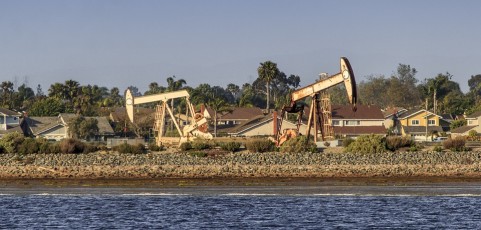The International Maritime Organization has recently issued new SOLAS regulations to improve safety on board ships on international travel. The regulation mandates having a four gas detector on ships for early detection of flammable gases on board the ships. Gas sensor manufacturers and gas detection companies are likely to benefit from the new rules as they can expect more orders for their products. Read this article to learn more about the new regulations and its wide ranging implications.
New Regulation Mandates Having A Four Gas Detector Onboard Ships On International Voyages
Ship operators will need to comply with this regulation, which comes into force on July 1st of this year. This is one positive step towards ensuring safety of those sailing in ships that undertake international voyages.
According to a recent article:
“The new regulation, coming into force on 1 July 2016, requires all ships engaged in international voyages to have at least one unit capable of detecting the presence of oxygen, flammable gases or vapours, carbon monoxide and hydrogen sulphide.”
It is also important to remember that the batteries and sensor need to be replaced after a period of 30 months to maintain smooth functioning. It is a good idea for operators to work closely with a gas detection company to comply with the regulations, as they are bound to change. With a growing emphasis on safety, regulatory bodies will likely review the safety guidelines and keep issuing new rules to prevent casualties.
Detection Units Need To Be Bump Tested Before Using Them In Enclosed Spaces
It is important to note that installation of gas detection systems is not sufficient to ensure safety of crew on ship. The detection units need to be bump tested to ensure they are working properly and can detect gases in time.
Care must be taken to establish a routine of inspection, testing and maintenance. The usage of gas detection units should be made mandatory for those entering enclosed spaces in ships. This will help in preventing the ship crew from getting overcome by toxic gases and raise an alarm if the presence of a toxic gas has exceeded the normal limits. The ship crew will be able to escape to safety and do their work safely.
According to a recent news article:
“Most importantly of all, Sheriff notes, the detection units have to be used by individuals entering enclosed spaces or tanks, not forgotten in a drawer. Next, they must be visually inspected regularly, the batteries charged, and the units ‘bump tested’ before use. So, an on-board routine needs to be established whereby the crew satisfy these demands.”
This article explains in detail about the new SOLAS regulation issued by the IMO for ship operators. The safety concerns onboard ships need to be addressed to prevent casualties due to the accumulation of toxic gases in enclosed spaces.

